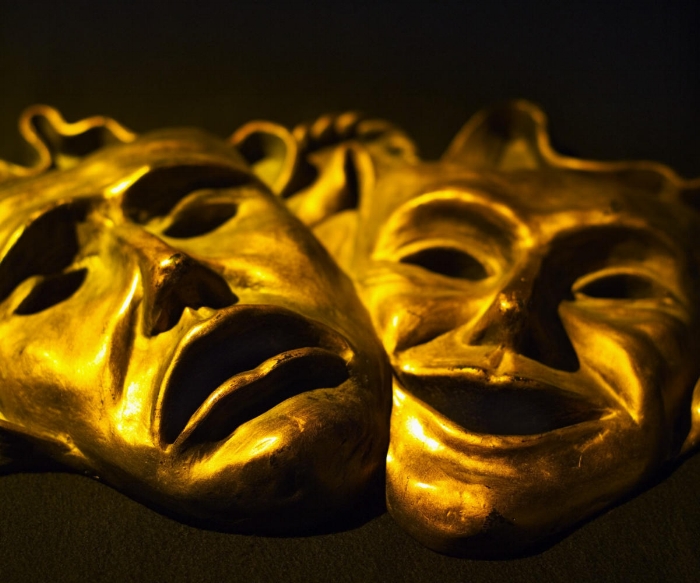The Origins of the Comedy and Tragedy Masks of Theatre
Cristina D'Almeida
When people think of theatre, it’s probably one of the most well-known symbols that comes to mind with many interpretations that go beyond just the comedy and tragedy, happy and sad meaning. The comedy and tragedy symbol dates back to Greek Mythology and has been the central representation of the creative arts for decades. This includes theatre, film, and television. It’s one of my favorite symbols and is still widely used today.
If we go back to Ancient Greece, it is said these masks were used in early plays to represent the emotions the characters were feeling. It was easier for audience members who were sitting far away from the stage to see the masks and the emotions they were portraying.
At that time, women were not allowed to act in any of the plays, so the men were able to wear these masks, especially if they had to play a female part. People often think these masks were just a symbol or design created by early thespians, but it actually started out as a tangible mask that was worn. It was considered a costume piece and then made itself more present until it became well known and a worldwide symbol.
In a historical sense, there are two names for each mask. The name Melpomene represents the tragedy mask or Muse of Tragedy and the name Thalia represents the comedy mask or Muse of Comedy. Melpo is the shorter name for Melpomene, meaning a celebration of dance and song.
Although this doesn’t seem overly appropriate, because Melpomene is the tragedy mask, it does fit in a theatrical sense in general. Thalia comes from the Greek verb thallein meaning to flourish or be verdant. Melpomene and Thalia were the daughters of Zeus.
People often relate the masks to Dionysus originally. Dionysus is the Greek God of wine. The masks depict the happy and sad emotions that drinking wine can bring. They have also been linked to the Greek God Janus which is known as the two-faced god of beginnings. It is said Janus lent the name to the masks.
Through the years, many versions of the masks have been designed, but they all portray the same basic emotions of happiness and sadness. Of course, there are some modern takes on the masks, but nothing totally out of the ordinary.
I think it’s interesting to take a deeper look into some of the actual plays that are considered comedies and tragedies in theatre. Shakespeare plays are a popular genre that comes to mind when thinking about those two very distinct types of plays because Shakespeare literally writes comedies and tragedies.
Some tragedies that come to mind instantly are Macbeth, King Lear, Othello, Romeo and Juliet and Julius Caesar. Some comedies that come to mind are Much Ado About Nothing, The Comedy of Errors, Twelfth Night and As You Like It.
These are all absolute favorites of mine and I think they’re the most distinct when thinking of comedies and tragedies. Theatre is not the same without this symbol and is remembered by so many.
Whether it’s related to ancient Greek times or as a general statement in the arts, it is always connected back to theatre and I think it is something that will be remembered hundreds of years from now. It is the face of the arts, but it is the root of the arts.
